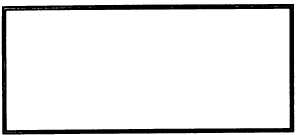on flags with accuracy and speed comes only with
practice.
There are many correct ways to bend on the flags.
The best way is the method that enables YOU to do
the fastest and most accurate job possible. A
description of one method of doing the job follows:
To bend on, lead the uphaul part of the halyard
under the upper part of your right arm, with the snap
on the end of the uphaul grasped firmly in your right
hand. The ring on the end of the downhaul is in your
left hand. (When standing by for a hoist to be called
out by the spotter, you can hook the snap on the uphaul
into the ring on the downhaul. This method prevents
the snap from accidentally being pulled out of your
hand and swinging out of reach.)
As the first flag is called out by the spotter, hook
the halyard snap into the ring on the correct flag. Pull
the ring out of its slot with the snap and let go. Then
grasp the snap of the flag and pull it out. You are now
ready to hook into the ring of the next flag. Continue
this process until the spotter calls out, “Going up.”
Then hook the snap, which you are holding in your
right hand, into the ring on the downhaul, which you
have in your left hand. You are now ready to tell the
person on the uphaul to “Take it up.” The actual
hoisting of a signal is generally a two-man job.
Be sure there is sufficient slack in the halyard to
prevent the snap from pulling out of your hand. In a
strong wind, put the downhaul ring over a belaying pin
to free your left hand, and use both hands to handle the
flags. Never make fast a halyard in use. These halyards
must be free for hoisting or lowering at an instant's
notice.
NOTE
All Signalmen should know the location
of the emergency radar cutoff switches for
their signal bridge. In the event of a lost hoist,
this can prevent extensive equipment damge.
5-6
When you call out to the person on the uphaul,
“Take it up,” keep a slight strain on the halyard so the
hoist goes almost straight up, not out with the wind.
The person on the uphaul should haul away quickly
and speedily, hoisting the signal to the dip or close-up
position, as appropriate. PQS for flag bag operator is
contained in NAVEDTRA 43354B, Personnel
Qualification Standards for Visual Communications.
HAULING DOWN SIGNALS
When a signal is hauled down, the person on the
uphaul should keep a slight strain on the halyard as
you lower the hoist; otherwise, the hoist might fly out
with the wind and become fouled.
Haul in quickly and evenly on the downhaul. As
the ring on the downhaul comes to your hand, grasp
it. Then grasp the snap on the bottom flag, and unhook
it from the halyard ring. Place the downhaul ring on
the belaying pin located in the fife rail on the flag bag
front. Keep hauling the rest of the hoist down to the
deck. As the topmost flag passes, unhook the snap end
on the halyard, and hook it on the ring located on or
near the flag bag.
As soon as the flags are on deck, the person on the
uphaul should unsnap them one from another and hand
them to you for restowing in the bag. As the flags are
handed to you, the name of each flag is called out to
assist you in getting them stowed. When all flags are
stowed and the halyards are made ready for the next
hoist, call out to the spotter, “Ready on the
starboard/port bag.”
PARTS OF A FLAGHOIST MESSAGE
LEARNING OBJECTIVES: Identify and
explain the parts of a flaghoist message.
A flaghoist signal or message consists of two
parts, heading and text. The heading may be specified
by hoisting a visual call sign. Normally, a flaghoist
signal or message hoisted without call signs is
addressed to all units within visual contact or to the
commander of the unit.
HEADING
The heading of a flaghoist message is hoisted
superior to the text. That is, it is displayed in a position
that is read before the text of a message. So long as the
heading appears before the text, it may be flown from
the yardarm on outboard hoists (as in fig. 5-5) or at the
triatic stay or masthead.
Modification of Heading
The heading of a flag signal may be modified by
the use of the four substitutes as follows:
FIRST SUB over the call sign of the originator
hoisted where best seen means "The originator of this
signal is
.” Intervening ships relay this signal

